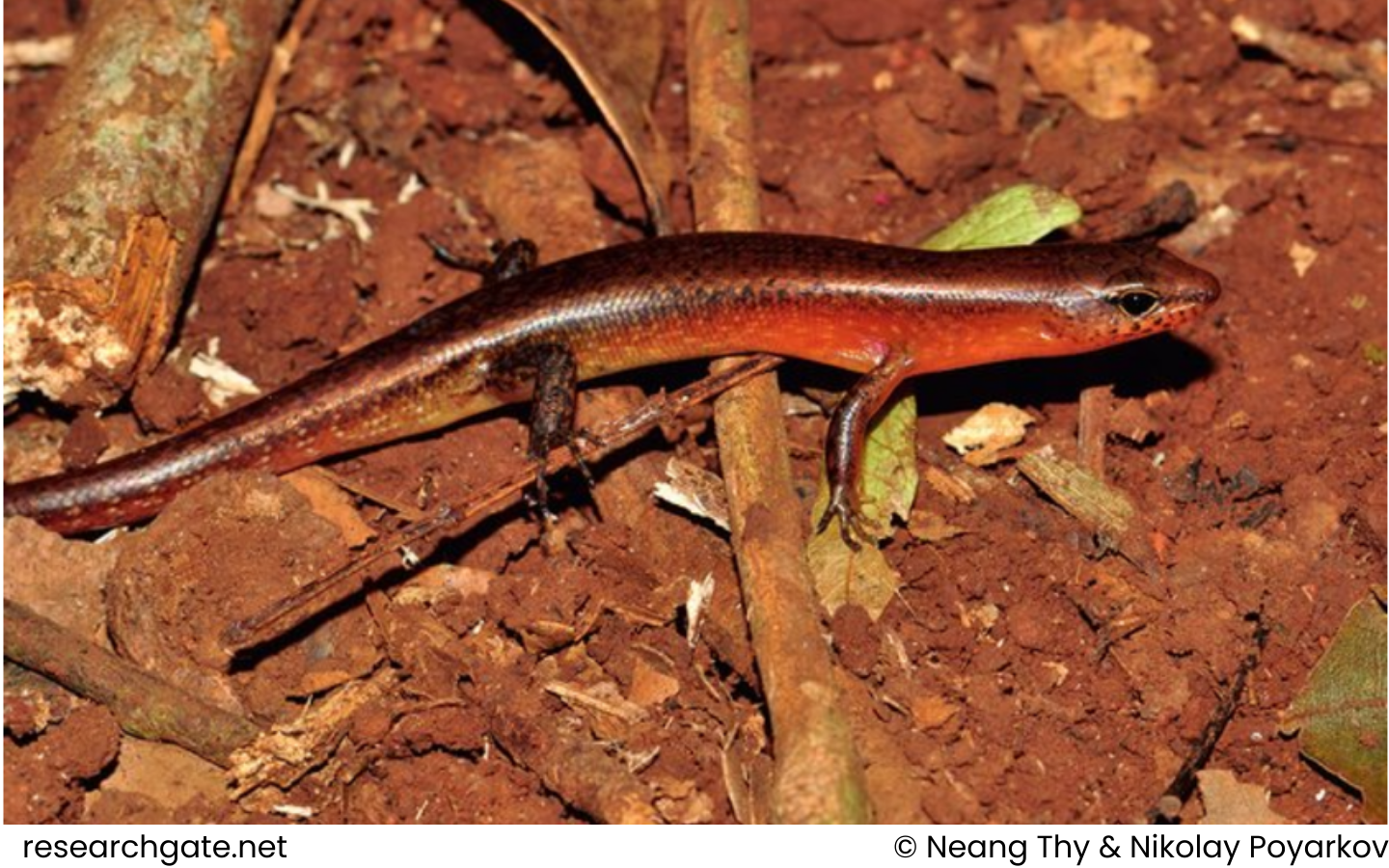
Science name: Sphenomorphus buenloicus – Darevsky & Nguyen Van Sang, 1983
Taxonomic: Animalia>> Chordata>> Reptilia>> Squamata >> Scincidae >> buenloicus
Species status: Endemic ; IUCN status: LC (Least Concern)
Description:
Physical Characteristics:
The species is a typical Sphenomorphus skink with diagnostic features typical of the genus, though detailed morphological traits for this specific species have not been elaborated in the IUCN assessment.
Distribution and habitat:
Elevation:
The specific elevation range for Sphenomorphus buenloicus is not provided, but the species is known to inhabit both lowland and mid-elevation forests in Vietnam.
Area:
This species is endemic to Vietnam, and it has been recorded in various provinces including Ha Tinh (Vu Quang), Quang Binh (Phong Nha-Ke Bang), Kon Tum (Kon Plong), Gia Lai (K Bang: So Pai), Dak Lak, Lam Dong, and Ba Ria-Vung Tau. Its type locality is Buenloi in An Khe District, Gia Lai Province.
Habitat:
Sphenomorphus buenloicus is a diurnal and terrestrial species that primarily inhabits primary tropical forests. It has been recorded in disturbed habitats such as secondary forests, open areas with shrubs, and even in clearings near roadsides and water reservoirs. This skink appears to be adaptable, found in both natural and artificial habitats, including degraded former forests and water storage areas.
Behaviour and ecology:
Lifestyle:
Sphenomorphus buenloicus is diurnal, being active during the day, and terrestrial, primarily dwelling on the forest floor where it hides in forest litter. The species shows adaptability by inhabiting both undisturbed and disturbed habitats. It has been observed near roadsides, water reservoirs, and in clearings, indicating its ability to survive in modified landscapes.
Reproduction:
The species is oviparous, meaning it lays eggs. Clutches typically consist of two to three eggs, and the hatchlings measure approximately 54 mm in length.
Conservation and status:
IUCN Red List Category and Criteria:
Sphenomorphus buenloicus is listed as Least Concern on the IUCN Red List. The species was last assessed in 2017, and it is considered relatively widespread and adaptable.
Population Trend:
The population trend for Sphenomorphus buenloicus is currently stable, with no significant declines reported. Its presence in both primary and secondary forests suggests that it is resilient to some degree of habitat disturbance.
Threats:
While the species appears to tolerate habitat modification, threats such as deforestation and habitat degradation could still pose risks, particularly if these activities intensify in its range.
Conservation Actions:
There are no specific conservation measures in place for Sphenomorphus buenloicus. However, it likely benefits from general forest conservation efforts in regions like Phong Nha-Ke Bang National Park and other protected areas where it is found.
Etymology
The species name buenloicus refers to the type locality Buenloi (Buon Luoi) in Gia Lai Province, Vietnam, where the species was first described.
Crocodile Trail – The Best Birding Trail in Cat Tien National Park
If you’re a birder or nature photographer planning a trip to Vietnam, few places offer [...]
Cong Troi Trail – Top 1 Dalat Plateau Birding Trail Experience
If you’re a birder or nature photographer planning a trip to Vietnam’s Central Highlands, the [...]
How to Identify the Greater Sand Plover, Tibetan Sand Plover and Siberian Sand Plover
Identification Differences within the Sand Plover Complex: The sand plover group, which was traditionally divided [...]
Highlights of Cat Tien National Park Reptiles and Amphibian Endemics
Spanning over 71,350 hectares of tropical forests, grasslands, and wetlands, Cat Tien National Park is [...]
Highlights of Cat Tien National Park Mammals in a World Biosphere Reserve
In addition to reptiles and birds, Cat Tien National Park is also rich in mammals, [...]
Kontum Plateau Endemic and Highlight bird
Kontum Plateau Endemic And Highlight Bird species like Chestnut-eared Laughingthrush and top birding routes while [...]